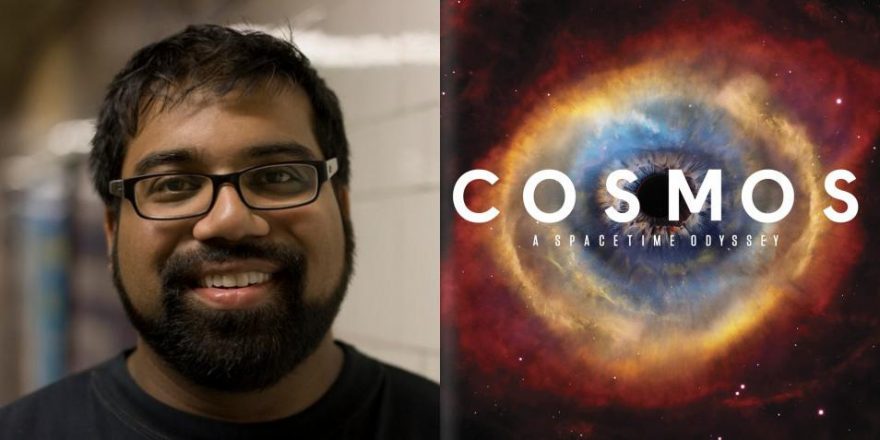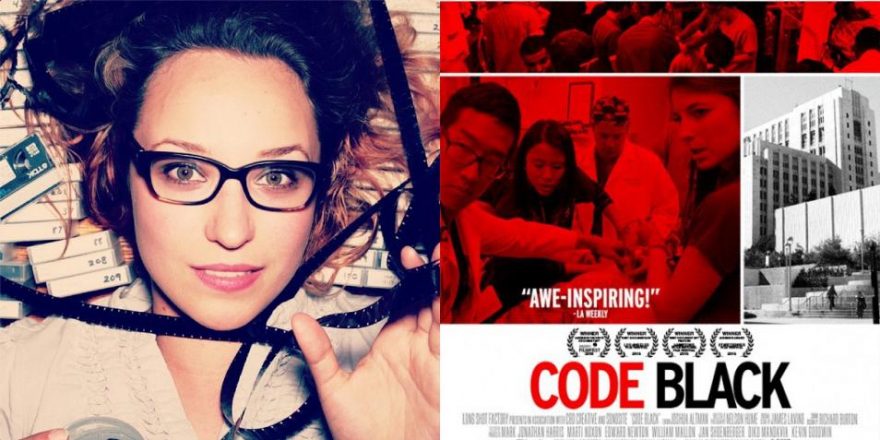The best television show this year was not True Detective or Mad Men or Girls or something on any cable channel. It was Cosmos: A Spacetime Odyssey on Fox, and it is one of most subversive TV programs to air in years. Cosmos comes at a time when the interest in science and scientists has reached a fever pitch. The most popular sitcom on television is about a bunch of physicists (The Big Bang Theory), one of the most acclaimed films of 2013 was Alfonso Cuaron’s Gravity and the feature documentary Particle Fever (directed by Mark Levinson) investigates the discovery of the Higgs Boson. If you’re like me, your Facebook news feed is always filled with images from I Fucking Love Science too.
I have a very personal connection to Cosmos. Between freshman and junior years as a biology major in university, a friend and I crisscrossed North America by train. The book I brought along for the adventure was Carl Sagan’s Cosmos, a companion to the original 1980 PBS television series, Cosmos: A Personal Voyage. Every page was so beautifully written and awe inspiring that, by the end of the book, I had decided to become a physics and astronomy major and to devote myself to understanding how the universe works. If you haven’t read it yet, you should.
The rebooted series – written by Sagan’s widow, Ann Druyan, and Steven Soter (who both co-wrote the original series with Sagan) – is a worthy successor to the original, and host Neil deGrasse Tyson is a worthy successor to Sagan. Tyson is cool, smart and charismatic while transferring the excitement he has for science to the audience. It’s personal for him too: Sagan was a mentor for Tyson (he’s got Sagan’s desk calendar with his name in it as proof), and that relationship had a profound effect on him. Sagan passed the torch to Tyson, and now Tyson passes the knowledge down to us.
Conventional programs about science, whether fictional or educational, try to find the right balance between science and entertainment. Cosmos rethinks the whole conflict and boldly suggests that science is entertainment. Sure Cosmos is about science and scientists, but the stories are filled with heroes, villains, obstacles and human conflict – the details I never learned in my graduate physics classes. No matter how out-of-this-world Cosmos can seem, the writing and directing (by Brannon Braga and Bill Pope) always makes us see the humanity in it all.
Considering the show airs on one of the country’s most conservative networks, it’s refreshing to see all of the “controversial” (really, there should be no controversy at all) topics intact. Where else can we see an entire episode (“Sisters of the Sun”) focused on the contribution of women to science? In other episodes, Tyson takes down intelligent design, creationism, “angry gods” and any other explanation for natural phenomena not based on scientific enquiry. The facts and evidence for global warming are lucidly explained while debunking the common “arguments” against it. One segment that must particularly bother some was the discussion of the ancient legend of Gilgamesh, which Tyson points out has since been recycled in the Bible as the story of Noah (might still be playing at a theater near you!).
For one hour every week, Fox was actually a place to go for clear, rational thought backed up with evidence. They’ve spared no expense on the production or promotion, rolling out the premiere episode internationally on Fox, National Geographic Channel and eight other channels (including Fox Sports 1 and 2!) in the U.S., while also streaming online for free. Someone high up believes in this program, or believes it will make a lot of money. Either way, it’s a bold gamble. Executive producer Seth MacFarlane also deserves kudos for supporting the program both financially and helping it find an audience.
My favorite device used throughout the program was the Cosmic Calendar, wherein the Big Bang occurs at midnight on January 1st and the second before midnight on December 31st contains all of our recorded history. It’s a clever trope which allows the viewer to understand the age of the Universe and time itself. Humanity is nothing more than a tiny blip in the grand scheme of things. There are two ways to interpret the Cosmic Calendar: 1) we, living in this time, are completely insignificant in the Universe or 2) we, living in this time, are completely unique and rare in the Universe.
The visual effects in Cosmos are mesmerizing. Tyson whizzed through the Universe on his shiny Ship of the Imagination, but it was the scenes depicted on Earth that really wowed me: Tyson was seen raising the Grand Canyon, like a superhero, so we can understand how it was created. We saw him kayaking in the Super-Kamiokande detector, where neutrino experiments are done – a location I assumed was secured through some sort of underground nerd network. But no, it was all greenscreened! Sure it’s spectacle, but it’s spectacle with the purpose of illuminating ideas and taking us to places we definitely couldn’t visit otherwise.
The cinematography by Bill Pope lends itself well to the material. The camera is constantly moving, always in the right place, or can be ahead of the audience by a few seconds. A composition might look weird, but after a moment, Tyson will move into the shot, or an object will appear in the right place. There’s a respect for the audience by hinting at an idea visually and allowing the viewer to put the pieces together before it’s explained.
My main criticism of the series is in the animation sequences. The content is terrific, but the drawings rendered in a crude, two-dimensional aesthetic is at odds with the rest of the show. The animations feel forced and unnecessary given that the dramatic recreations and special effects are so effective.
Cosmos: A Spacetime Odyssey is a new high point for science on television, if not television altogether. The entire team should be applauded for refreshing and improving an already impressive series that is still relevant today. They’ve made a program about and for the ages. I can’t help but hope that some kids, or even just a single soul amongst the millions and billions of people out there, will see the show and be inspired to study science. Or become a filmmaker. Or, at the very least, look up at the sky and know we’re all made of the same stuff as the stars.







